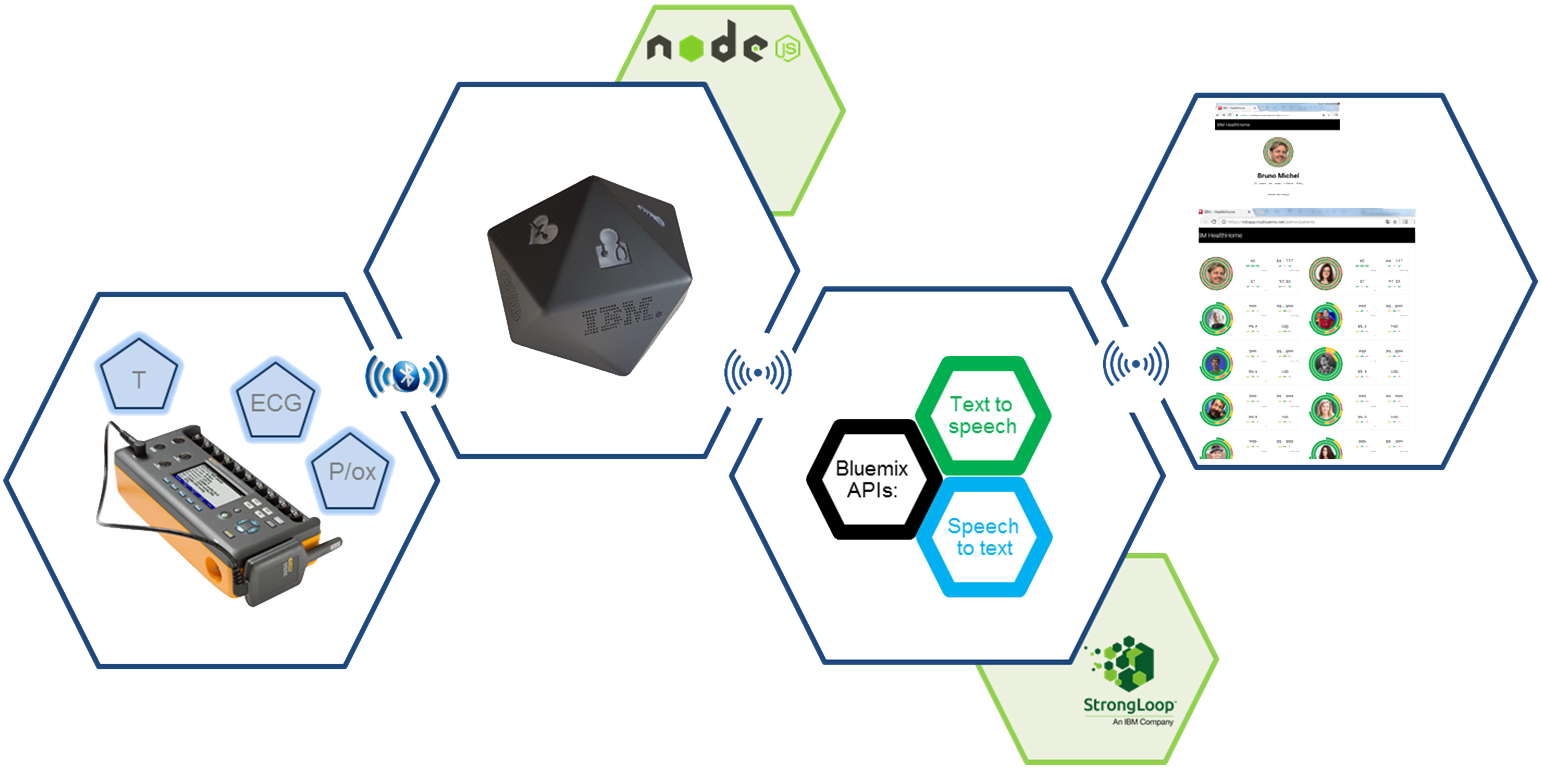“We are working to expand the scope of wearable devices from medical, safety, and well-being to more generic scenarios encountered in everyday life.”
—IBM scientist Bruno Michel
Intelligent wearable devices have entered our daily lives
Most users permit them to upload their data automatically to the cloud for interpretation and display on their mobile devices. However, proprietary protocols, algorithms and the limited quality of sensor data have limited the successful deployment of these technologies in the medical space.
We combine data from devices from different manufacturers, together with novel sensors, and a patient’s medical history to create a contextual patient model.
We also combine wearable fitness and healthcare devices with cloud data-analytics and cognitive user interfaces to medically supervise and support patients and to facilitate home-care models for cases where long-term hospitalization was required in the past.
Ask the experts

Bruno Michel
IBM Research scientist

Our focus
In the short term, we are exploiting off-the-shelf sensors (ECG, heart rate, temperature, accelerometers, microphones, etc.) to create solutions quickly for specific markets.
In the mid-term, we are interlinking different short-term solutions through sophisticated analytics and machine-learning algorithms to support more complex and generic medical applications.
In addition, we are using this system to develop fundamentally new insights into better personalized medicine.
The mid-term solution will be complemented with highly integrated wearable devices with new sensors, sensor principles, and low-power, efficient, cognitive edge-computing capabilities.
This puts the wearer or patient at the center of it all, providing new ways of interacting with computing systems, the environment and remote specialists.
We are working to expand the scope from medical, safety, and well-being to more generic scenarios encountered in everyday life.
The graphic above illustrates system integration from wearables to hypervisors to cloud analytics functions to user interfaces.
Edge computing
Wireless connection of several wearables to create an intelligent, cognitive device has been demonstrated for temperature, ECG, and SPO/PPG.
The cognitive hypervisor is connected to the IBM cloud to store data in the cloud and to perform real-time analyses of ECG and other vital signs.
Alerts can be created directly on the hypervisor but also as the result of the real-time analysis in the cloud.
The hypervisor facilitates simple user interaction by voice, touch and lights.
Our main tasks
- Exploit existing wearable devices by collecting data from wearable and smart devices,
- Connect to the cognitive hypervisor by making a wireless connection to an intelligent, cognitive device in a patient’s home; the cognitive hypervisor is connected to the IBM cloud,
- Ensure ultimate integration by creating a device–human symbiosis and natural interaction through full vertical integration,
- Develop new sensing technologies based on integrated CMOS-compatible sensors and new sensing principles.
IBM Cognitive Hypervisor
Hardware innovation is very important because most adoption barriers are due to performance, functionality and manufacturability of wearables.
Major obstacles are component integration, reliability of connectivity, efficiency of energy storage, power management solutions, user interfaces and data security.
Software and system-level integration innovation is of equal importance. This includes
- Developing standard APIs facilitating app creation
- Open operating systems and cross-platform development to enable wearable devices to run on multiple platforms
- Open communication protocols that ensure security and privacy, especially for such application areas as health and finance
- Developing new communication systems, especially for artificial and virtual reality to make them more realistic and immersive.
Progress should be made in a coordinated fashion in each of these areas in order to accelerate product development and market uptake of wearables.
Overcoming these barriers will create new business opportunities
New component integration methods: integrating and miniaturizing sensors, actuators or power sources that comply with thermal and electrical requirements.
New interconnection technologies, including new technologies for integrating electronics on textile substrates.
Integration and assembly technologies, including pick-and-place techniques for device mounting, stretchable module integration into fabric or chip placement on a foil using self-assembly principles.
Power management and storage: developing and integrating energy-related systems (e.g. batteries, photovoltaic cells) to obtain energy-autonomous, self-powered systems and devices.
Manufacturing technology for printed electronics: developing a scalable and cost-effective manufacturing technology, e.g. based on roll-to-roll processing, for producing high volumes of flexible and non-intrusive devices of consistent quality.
More information

“Of Big Brains and Tiny Devices: Here Comes the Internet of the Body”
Bruno Michel, IBM Scientist

“Wearables im Gesundheitswesen — Chancen durch kognitive Technologien”
Sebastian Gerke, IBM Scientist